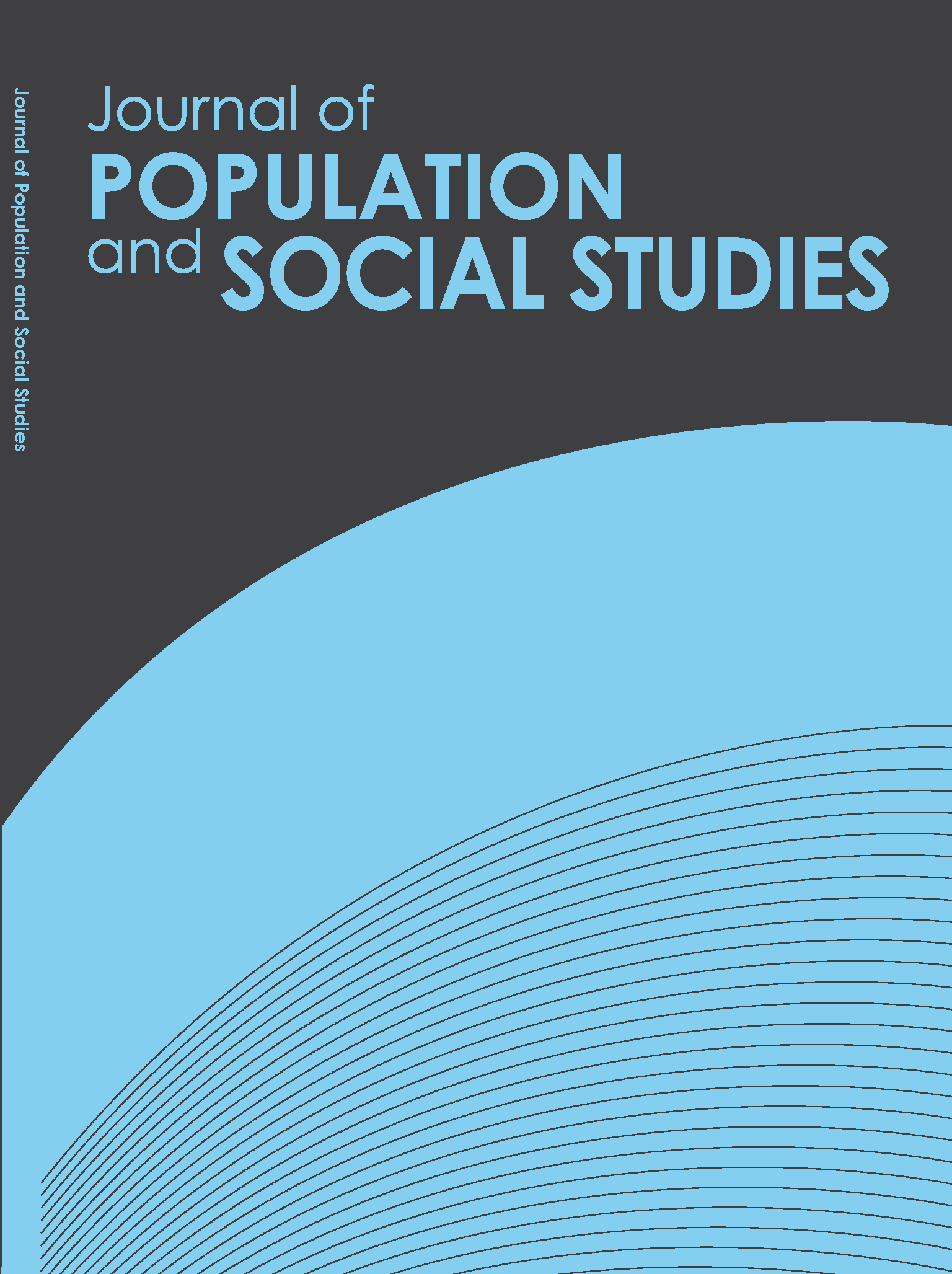Internal Migration to the Southeast Region of Vietnam: Trend and Motivations
Main Article Content
Abstract
Internal migration in Vietnam following the “Reform” are identified by a set of "push" factors and "pull" factors. The Southeast region of Vietnam has the most rapid industrialization, urbanization and population concentration in Vietnam. Focusing on the last ten years, this study aims to show the factors motivating migration into the Southeast region. It employed a factorial analysis model to examine data collected from a sampling survey and revealed the pull factors of immigration are: 1) Abundant information on jobs and employment opportunities; 2) Ease of finding jobs; 3) Availability of better salaries; 4) Better health systems, education, entertainment, and living environment; 5) Wishing to become urban citizens; 6) Availability of social networking; 7) Ease of residence registration. The push factors, on the other hand are: 1) Lack of employment in departure area; 2) Pressures of family’s debts, health care and personal education; 3) Poor hospital system and schools; 4) Desire to leave from agriculture and the homeland; 5) Challenges of living and production conditions under the impact of natural disasters.
Article Details
References
Dang, N. A. (1997). Migration and Development in the context of socio-economic renovation in Vietnam. Journal of Sociology, (1), 3-12.
Dang, N. A. (1998). The role of rural – urban migration in the rural development at present. Journal of Sociology, (4), 15-20.
Dang, N. A. (2005). Labor Migration in the Industrialization and Modernization in Vietnam. Journal of Sociology, (2), 23-32.
Espíndola, A. L., Silveira J. J. & Penna T. J. P. (2006). A Harris-Todaro Agent-Based Model to Rural-Urban Migration. Brazilian Journal of Physics, 36, 603-609.
General Statistics Office. (2000). The Vietnam Population and Housing Census in 1.4.1999: Major findings. Hanoi: Statistics Publishing House.
General Statistics Office. (2005). 2004 Vietnam national survey on Migration: Major Findings. Hanoi: Statistic Publishing House.
Internal Migration to the Southeast Region of Vietnam: Trend and Motivations
General Statistics Office. (2010). The Vietnam Population and Housing Census in 1.4.2009: Major findings. Hanoi: Statistics Publishing House.
General Statistics Office. (2015). The Vietnam Population and Housing Inter-census in 1.4.2009: Major findings. Hanoi: Statistics Publishing House.
Hagen-Zanker J. (2008). Why do people migrate? A review of the theoretical literature. Netherlands: Maastricht University.
Harris, R. J. & Todaro M. P. (1970). Migration, Unemployment and Development: A two-sector Analysis. The American Economic Review, 60(1), 126-142.
HIDS. (1996). Migration, Human resources, Employment and Urbanization in Ho-Chi-Minh city. Hanoi: Politics Publishing House.
Laing D., Park C. & Wang P. (2005). A Modified Harris-Todaro Model of Rural-Urban Migration for China. In Yum K. Kwan K.Y. & Eden S.H. Yu E.S.H. (Eds), Critical Issues in China's Growth and Development. England: Ashgate Publishing Limited.
Le, B. D. & Khuat T.H. (2008). Migration and social protection in the transition to market economy in Vietnam. Hanoi: The World Publishing House.
Le, B. D. et al. (2006). Social Protection for vulnerable groups in Vietnam. Hanoi: The World Publishing House.
Lee, E. S. (1966). A theory of Migration. Demography, 3(1), 47-57.
Luu, B. N. & Nguyen T. T. (2011). Who is the youth migrants working in informal sector in Hanoi? Economic and Development Review, (186), 3-9.
Ravenstein, E. G. (1885). The Laws of Migration. Journal of the Statistical Society of London, 48(2), 167-235.
Todaro, M. P. (1969). A model of labor migration and urban unemployment in Less Development Countries. The American Economics Review, 59(1), 138-148.
UN Vietnam. (2010). Internal Migration: Opportunities and Challenges in Socio-economic Development in Vietnam. Hanoi, Vietnam.
Vietnam Government. (2014). Decree No 08/NQ-CP on Action Programme on Active Response to climate change and on strengthen of natural resources’ management and environment protection.
Zhu, N. (2002). Impacts of Income Gap on Migration Decision in China: A Verification of the Todaro Model. China Economic Review, 13, 213-230.

